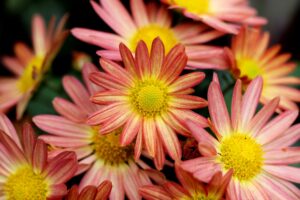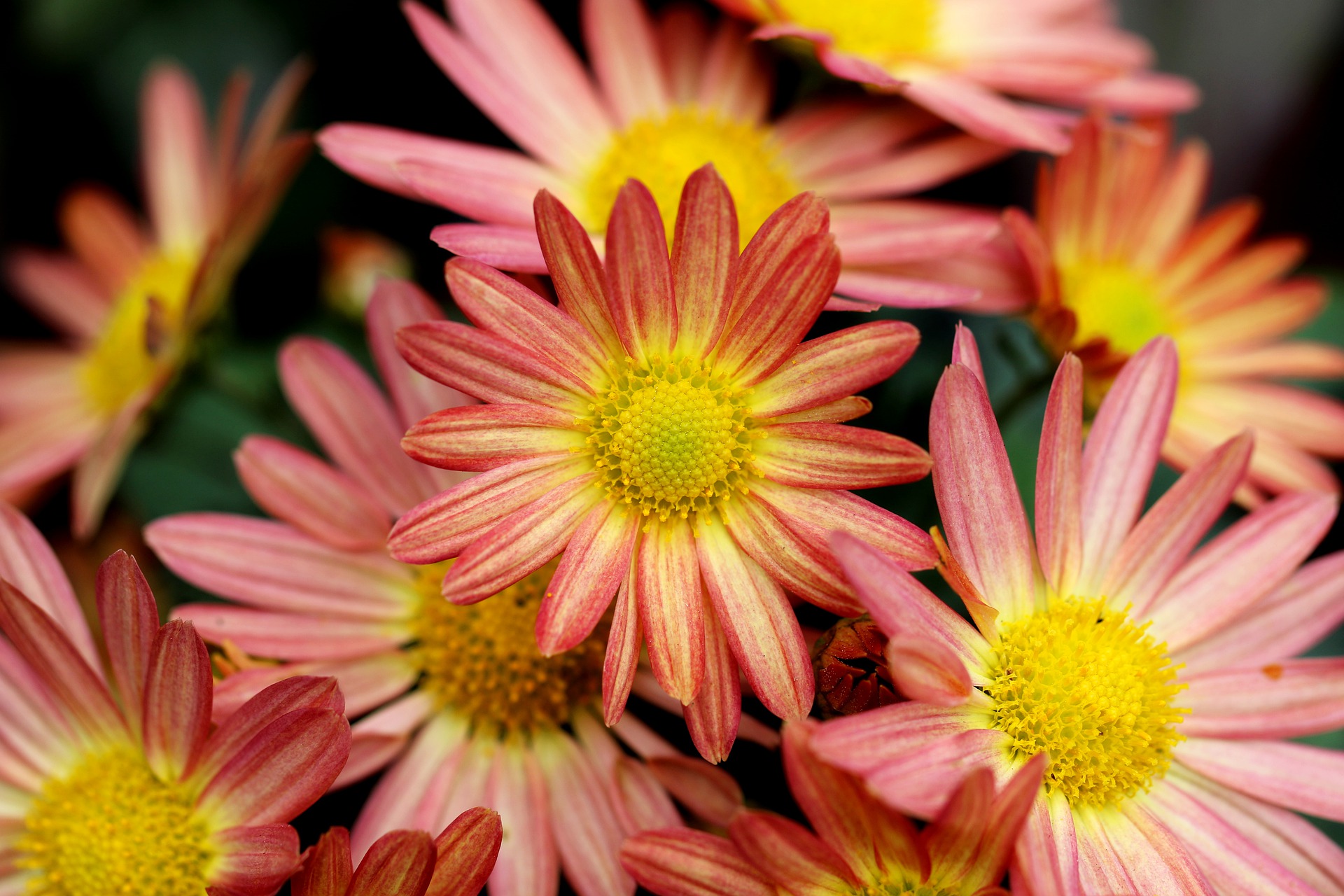
Chrysanthemums for Keeps

Beware: “hardy chrysanthemums” might not necessarily be hardy.
By Thomas Christopher
One of the more embarrassing missteps of my early career as a horticulturist began with my success one autumn in persuading an important client to invest in 20-plus “hardy” chrysanthemums. Given the descriptor (hardy), I assured the client that these plants would survive the winter to return the following year. Instead, the cushions of brilliant flowers and deep green foliage all withered with the onset of cold weather, and not one sent up a shoot the following spring.
This is the practically inevitable fate of the chrysanthemums you find in fall at garden centers and big box stores. These plants are bred and grown, forced in greenhouses, to provide a spectacular but fleeting display. Most are not winter hardy in the North Country, and even those that are, if dropped into the garden in autumn, will not have time to root into the soil and will be heaved out of the ground by frost.
You can have truly perennial chrysanthemums in your garden, all the way into USDA climate zone 3, but it requires the planting of different varieties and a different horticultural treatment.
One approach is to look backward. Cultivated chrysanthemums originated in Asia, where they were grown primarily as florists’ specimens, and that is how they were regarded by enthusiasts when examples made the trip to Europe in the 18th and early 19th centuries. These pioneer chrysanthemums remained largely greenhouse plants until they were interbred with some hardier wild species, notably the Korean Chrysanthemum rubellum (which is now more correctly identified as Chrysanthemum zawadskii subsp. latilobum). Several groups of winter-hardy perennials that performed well in the open garden were bred from these crosses, initially in Britain, but by the 1930’s in the United States as well.
One of the survivors of the British efforts is ‘Sheffield Pink,’ also known as “Hillside Sheffield Pink”. Still available from a number of mail-order nurseries, this cultivar makes a clump 2-3 feet tall and wide, bearing masses of yellow-centered, pale pink, daisy-like blossoms from mid to late fall. Given a well-drained, humus-rich soil, it is typically hardy through USDA zone 5 (some vendors advertise it as hardy to zone 4), but benefits from a protective mulch of evergreen boughs in winter in colder regions.
Another useful British heirloom is ‘Mary Stoker,’ which bears all yellow, daisy-like flowers whose petals take on warm pink tones as they age. This is hardy to zone 4.
The American breeding programs, most famously the one carried out by Alex Cummings of Bristol Nurseries in central Connecticut, produced a wealth of hardy perennial mums, almost all of which, sadly, have been lost, although a few, ironically, are still for sale in British nurseries. The descendants of these plants, “Korean chrysanthemums” grown from seed of the ones produced by mid 20th-century breeders, are still on display in two New York City gardens: the Conservatory Garden in Central Park and the Jane Watson Perennial Garden in the New York Botanical Garden. The beautiful colors of these chrysanthemums, which bloom from early October into November, suggest that some enterprising nursery person ought to bring them back into commerce. The New York Botanical Garden, in particular, has been selecting for a whole palette of different hues and maintains a collection of some 46 different strains.
One American chrysanthemum breeding program whose fruits have not been lost is that conducted by the University of Minnesota, which began in the 1920’s and is still on-going. This “Minnesota Hardy” program has produced chrysanthemum plants of all sorts, from “Mammoths” that can spread to 3 or 4 feet once established, to dense, hemispherical “Cushions” that reach a height and width of just 12 to 18 inches, with single, semi-double, and pompom flowers in shades of russet, gold, pink, red, and white. As might be expected of plants from Minnesota, these chrysanthemums are exceptionally cold hardy, overwintering successfully through USDA zones 3 or 4, depending on the type.
Growing these perennial chrysanthemums requires more planning than the disposable types you’ll find for sale in the fall. The perennial chrysanthemums must be transplanted into a sunny bed in early to mid-spring. Water during dry spells and pinch off the tip of new shoots every 2-3 weeks from the time when growth reaches 4-6 inches until the 4th of July – this will keep plants compact and enhance the growth of more flower-bearing shoots. Given this minimal care, you should enjoy an outstanding show of mid to late fall flower color, year after year.
-30-
Be-a-Better-Gardener is a community service of Berkshire Botanical Garden, located in Stockbridge, MA. Its mission, to provide knowledge of gardening and the environment through a diverse range of classes and programs, informs and inspires thousands of students and visitors each year. Thomas Christopher is a volunteer at Berkshire Botanical Garden and is the author or co-author of more than a dozen books, including Nature into Art and The Gardens of Wave Hill (Timber Press, 2019). He is the 2021 Garden Club of America’s National Medalist for Literature, a distinction reserved to recognize those who have left a profound and lasting impact on issues that are most important to the GCA. Tom’s companion broadcast to this column, Growing Greener, streams on WESUFM.org, Pacifica Radio and NPR and is available at his website, https://www.thomaschristophergardens.com/podcast.

 Thomas Christopher is the co-author of “Garden Revolution” (Timber Press, 2016) and is a volunteer at Berkshire Botanical Garden. berkshirebotanical.org Be-a-Better-Gardener is a community service of Berkshire Botanical Garden, one of the nation’s oldest botanical gardens in Stockbridge, MA. Its mission to provide knowledge of gardening and the environment through 25 display gardens and a diverse range of classes informs and inspires thousands of students and visitors on horticultural topics every year. Thomas Christopher is the co-author of Garden Revolution (Timber press, 2016) and is a volunteer at Berkshire Botanical Garden. berkshirebotanical.org.
Thomas Christopher is the co-author of “Garden Revolution” (Timber Press, 2016) and is a volunteer at Berkshire Botanical Garden. berkshirebotanical.org Be-a-Better-Gardener is a community service of Berkshire Botanical Garden, one of the nation’s oldest botanical gardens in Stockbridge, MA. Its mission to provide knowledge of gardening and the environment through 25 display gardens and a diverse range of classes informs and inspires thousands of students and visitors on horticultural topics every year. Thomas Christopher is the co-author of Garden Revolution (Timber press, 2016) and is a volunteer at Berkshire Botanical Garden. berkshirebotanical.org.
